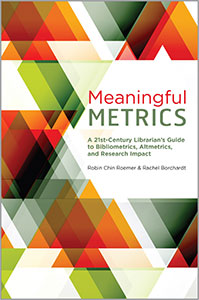Quick Links to Key Tools
-
Web of Science This link opens in a new window
This database is a core general science resource, covering all aspects of scientific literature. It also has a number of tools that make it a unique resource for finding scholarly literature. Item records come with links both to the works cited by the paper in question and the future works that cite that paper. Web of Science also allows the user to set up email alerts for specific authors or topics, provides researcher profiles, and to use associated journal metrics provided by the vendor.
About Research Impact
What is Research Impact?
Research Impact is the influence of a scholar's work on academia as well as the wider world.
- Academic Impact: Contribution to academic advances, across disciplines, including advances in understanding, methods, theory and application
- Societal Impact: Benefits to individuals, communities and nations by enhancing quality of life, health, and improving the effectiveness of public services and policies
- Economic Impact: Promoting national and global economic competitiveness
Adapted from "Pathways to Impact" Research Councils UK.

Wordcloud from: https://irsg.bcs.org/informer/2020/05/bibliometric-enhanced-information-retrieval-bir-2020-10th-anniversary-edition-at-home/
Research Impact can help support:
- Application for promotion or tenure
- Grant proposals or renewals
- Ensuring that your work is properly credited
- Connecting to other researchers engaged in related research across disciplines
Key Definitions
The journal impact factor measures the frequency with which an 'average article' in a journal has been cited in a particular year or time period.
The h-index measures an author's productivity (number of publications) and citation impact (number of citations received).
The g-index is an index for quantifying scientific productivity based on publication record (an author-level metric). It was suggested in 2006 by Leo Egghe. See Harzig's Publish or Perish Manual.
The i10-index is a measure used only be Google Scholar that shows the number of publications with at least 10 citations.
The Eigenfactor score ranks a journal's influence or prestige by looking at the number of times articles published in a journal over the past 5 years have been cited in the Journal Citation Reports (JCR). Citations from more influential journals are weighted more than citations from less influential journals.
Altmetrics are non-traditional measures of citation impact. They are based on online activity from many web services such as: PubMed, Mendeley, Facebook, Twitter, research blogs and other sources. They show how often an article has been viewed, downloaded or shared via various social media outlets.
For more information, see What Are Altmetrics?
Librarian
Guide Authors
Paula Carey
General Science, Engineering, & Mathematics Librarian
pac@bu.edu
Mary Foppiani
Astronomy, Biology, & Physics Librarian
foppiani@bu.edu
Barbara Maratos
Modern Languages, Comparative Literature, & Linguistics Librarian
bkmarato@bu.edu
Kate Silfen
Health Sciences Librarian
ksilfen@bu.edu
Dan Benedetti
Head, Pickering Education Resources Library
benededa@bu.edu




